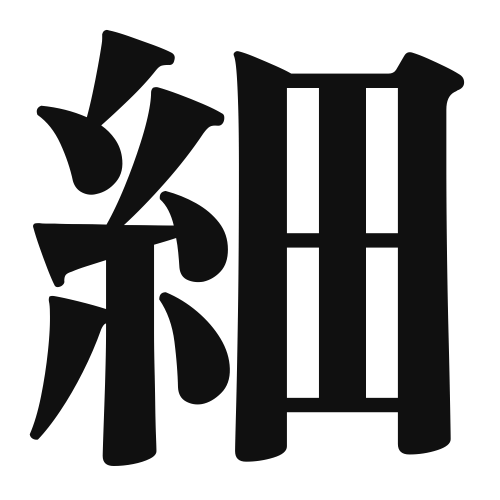1. Overview of Meaning
The kanji “細” (pronounced “sai” or “hosoi”) means “thin,” “fine,” or “detailed.” It is often used to describe something that is slender or has a delicate quality.
2. Formation and Radical
Formation of the Kanji: The kanji “細” is a phonetic-ideographic character (形声文字). It combines the radical for “small” (小) with the phonetic component “さい” (sai), which contributes to its pronunciation.
Radical: The radical of “細” is 小 (small), which indicates a connection to something that is small or fine.
3. Examples of Usage
Common Words and Phrases:
- 細い (hosoi) – thin
- 細かい (komakai) – detailed, fine
- 細工 (saiku) – craftsmanship, intricate work
Example Sentences in Daily Conversation:
- この糸はとても細いです。 (Kono ito wa totemo hosoi desu.) – This thread is very thin.
- 彼の説明は細かいです。 (Kare no setsumei wa komakai desu.) – His explanation is detailed.
4. Synonyms and Antonyms
Similar Kanji:
- 薄 (usui) – thin, weak (often used for liquids or colors)
- 狭 (sema) – narrow (often used for spaces)
Opposite Kanji:
- 太 (futo) – thick, fat
- 広 (hiro) – wide, broad
5. Cultural and Historical Background
Connection to Japanese Culture: The concept of “細” is often associated with precision and attention to detail, which is highly valued in Japanese craftsmanship and art.
Proverbs and Idioms:
- 細かいことを気にする (komakai koto o ki ni suru) – to worry about small details.
- 細い道を行く (hosoi michi o iku) – to take a narrow path, often used metaphorically to describe a careful approach in life.
